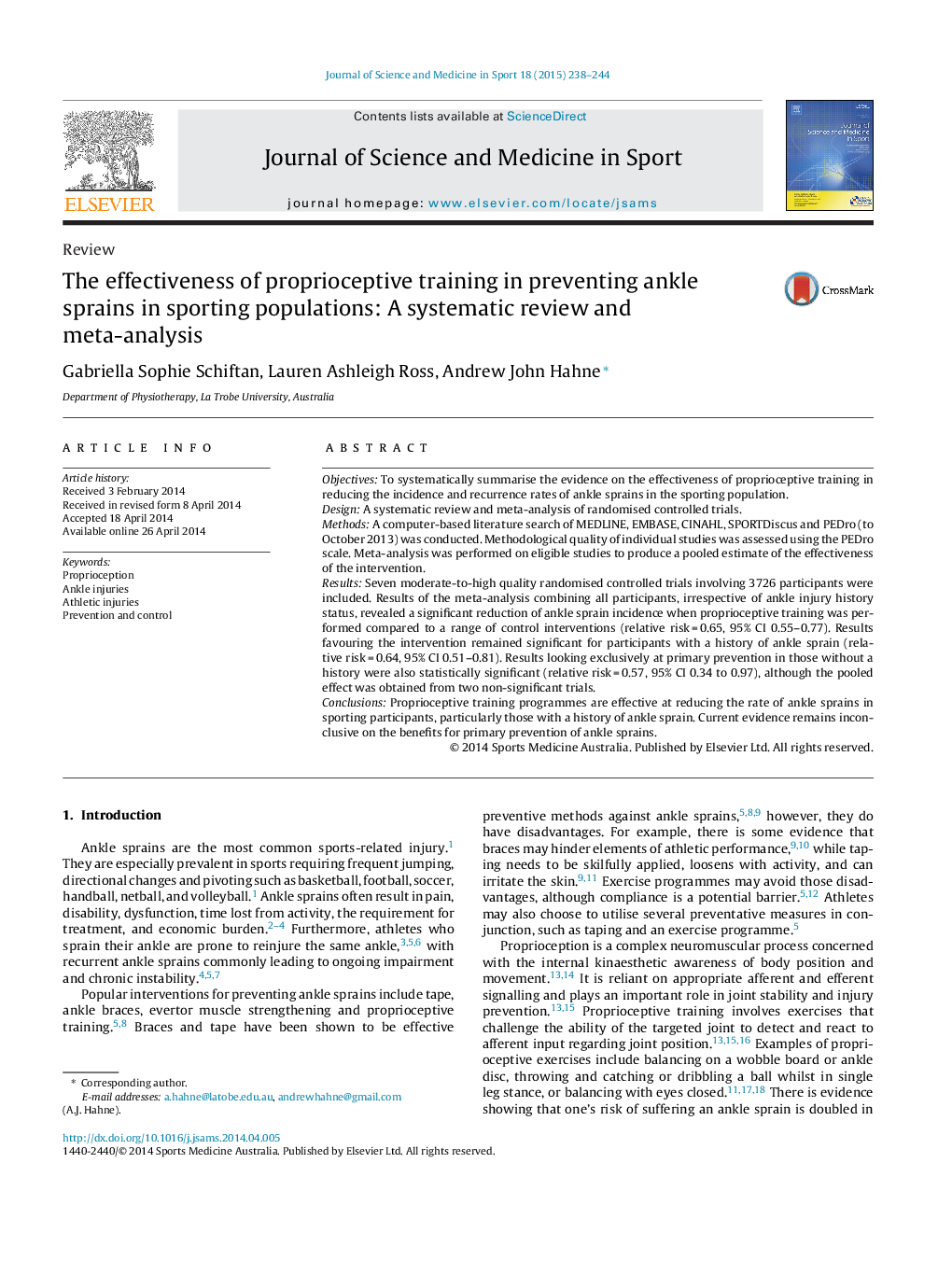| Article ID | Journal | Published Year | Pages | File Type |
|---|---|---|---|---|
| 2702752 | Journal of Science and Medicine in Sport | 2015 | 7 Pages |
ObjectivesTo systematically summarise the evidence on the effectiveness of proprioceptive training in reducing the incidence and recurrence rates of ankle sprains in the sporting population.DesignA systematic review and meta-analysis of randomised controlled trials.MethodsA computer-based literature search of MEDLINE, EMBASE, CINAHL, SPORTDiscus and PEDro (to October 2013) was conducted. Methodological quality of individual studies was assessed using the PEDro scale. Meta-analysis was performed on eligible studies to produce a pooled estimate of the effectiveness of the intervention.ResultsSeven moderate-to-high quality randomised controlled trials involving 3726 participants were included. Results of the meta-analysis combining all participants, irrespective of ankle injury history status, revealed a significant reduction of ankle sprain incidence when proprioceptive training was performed compared to a range of control interventions (relative risk = 0.65, 95% CI 0.55–0.77). Results favouring the intervention remained significant for participants with a history of ankle sprain (relative risk = 0.64, 95% CI 0.51–0.81). Results looking exclusively at primary prevention in those without a history were also statistically significant (relative risk = 0.57, 95% CI 0.34 to 0.97), although the pooled effect was obtained from two non-significant trials.ConclusionsProprioceptive training programmes are effective at reducing the rate of ankle sprains in sporting participants, particularly those with a history of ankle sprain. Current evidence remains inconclusive on the benefits for primary prevention of ankle sprains.
